|
From part 1 – Did you remember where you left the camera case? Avoid dropping your flash into San Francisco Bay? Good – you learned from my mistakes! This week I’ll show you how I carry gear for interiors, ruins and travel. The part 1 approach still applies – I first choose the gear I’ll need. Then I grab and load cases to carry it. For these subjects, you’ll be moving less, or carrying less. Cases will be smaller for ruins and travel – perfect for Holiday gifts. Here’s what I use – and how I do it. 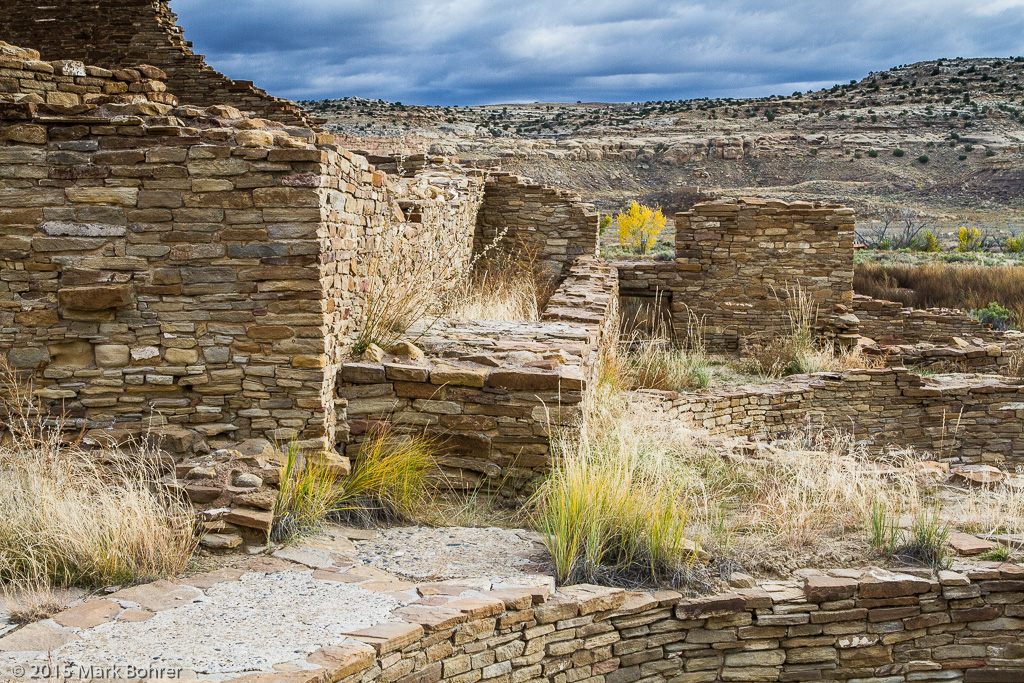 Pueblo Bonito ruin, Chaco Canyon 24-70mm f/2.8L on EOS 5D mk II The Architect’s Sketch Shooting interiors means I have more than just cameras to worry about. For anything smaller than an auditorium, I’ll choose shoe-mount flashes and both 16-35mm f/2.8L and 24mm f/3.5L TS-E lenses. I prefer the TS-E lens to render everything without tilting the camera. That keeps parallel lines parallel in pictures. But sometimes I need wider than 24mm coverage, so I’ll use the 16mm zoom. I’ll also bring the 24-70mm f/2.8L in case I want to isolate a feature outside. I’ll use the full-frame EOS 5D mk II, but I’ll bring the EOS 7D as a backup. And I’ll need lightstands and umbrellas for the flashes, plus a tripod for the camera. Finally, I’ll also pack RadioPopper Jr2 and JrX wireless triggers for the flashes. These let me control every flash’s light power at the camera. That’s a real time saver when you have three or four flashes on light stands scattered around the room. I also have to make a decision about light bulb fixtures in a room. If they’re on, the room can look more natural, but they’re going to give me blown highlights. Turning them off eliminates the hotspots, but the room can look less ‘lived-in’. I usually leave them on and ‘blend’ them as best I can in Lightroom afterwards. 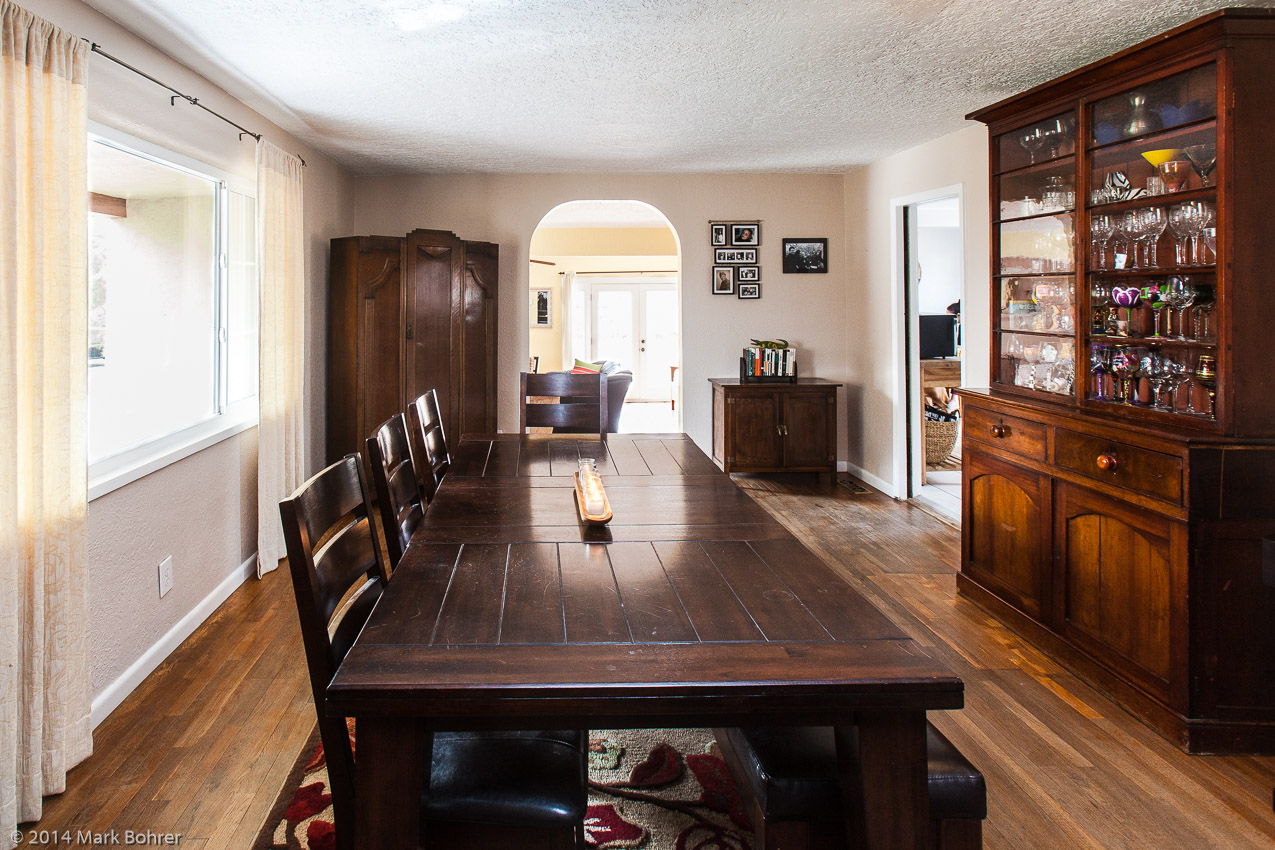 Dining room interior – lit candles down the center 16-35mm f/2.8L at 16mm on EOS 5D mk II Everything except the umbrellas and stands fits in a Think Tank Airport Security v2 rolling case. Even fully-loaded with 2 camera bodies, three lenses, 4 flashes and a dozen spare AA batteries, I can still swing this case into the back of my SUV. The v2 version shown here has been discontinued, but the v3 has a similar amount of space. 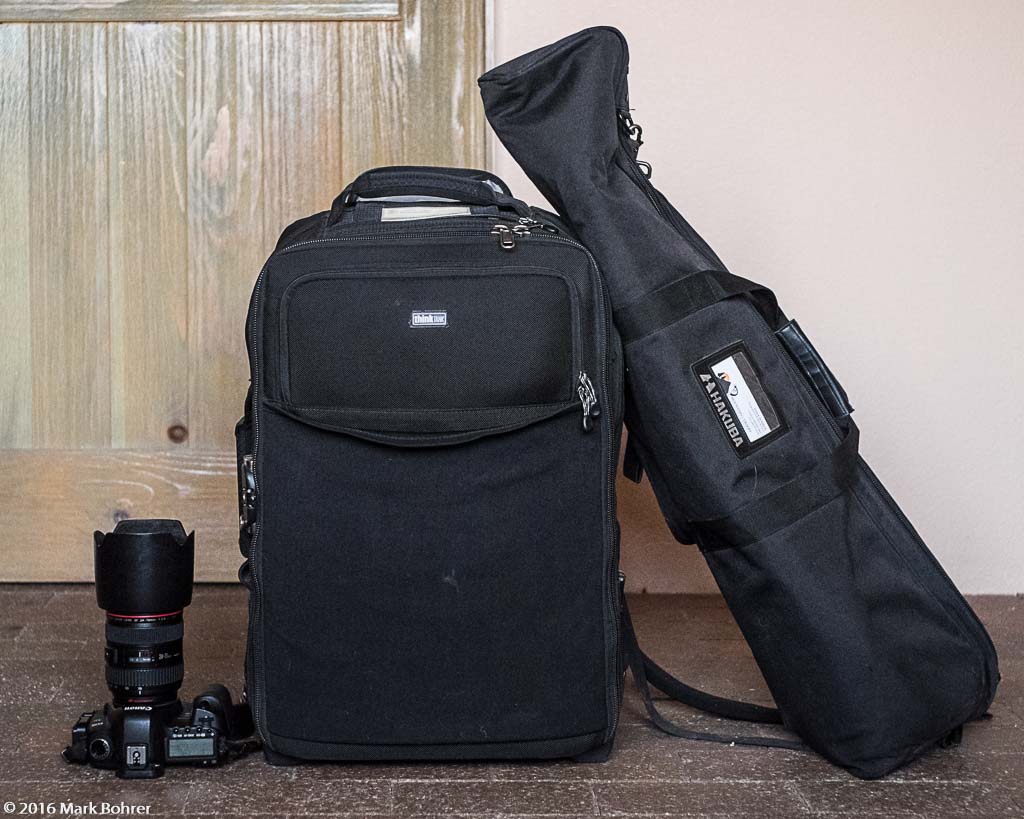 ThinkTank Airport Security v2 & Hakuba 200 tripod case Your new cases won’t be worn like these. EOS 5D mk II with 24-70mm f/2.8L for scale If you’re transporting a 500mm or 600mm lens on an airplane, the Think Tank Airport Security was made to do that. I’ve fit a dSLR on 500mm f/4L IS, a second dSLR body, 24-70mm f/2.8L, 70-200mm f/2.8L IS, and 550EX flash with Better Beamer focuser inside mine. It’s more protective and durable than my old soft-sided Moose Pack MP-2. Tripod Case For Stands I throw lightstands, umbrellas and tripod in a big Hakuba tripod case. When I get to the shoot, I have just two bags to schlep around. I’ll set up outside first for exterior shots, to capture early-in-the-day outside light. I might set up one flash to fill or highlight an outside feature – if there’s a nice-looking door for example, I’ll highlight that. Then I’ll move inside. I usually shoot the biggest rooms first – family room, dining room, kitchen. Absent any client suggestions, I’ll pick the ‘must-see’ feature and make sure that’s well lit. Then I’ll check the exterior/window and interior light balance. Balance The Light The biggest problems usually come from bright outside window light versus much-dimmer interior light. After I solve those with interior flash placement and shutter speed / aperture choices, I’ll shoot. I move flashes on stands and cameras with lenses to the next room without disassembling them. I’ll leave the empty cases and spare equipment in one room. Most interior shooting is about noticing and avoiding distracting elements, and sharp focus where you want it. TS-E / tilt-shift lenses are manual focus, so checking sharpness is a must, especially if your eyesight is less than perfect. I got back from a real estate shoot once, and was horrified to discover most of the TS-E interior shots were slightly blurry. Fortunately there were sufficient sharp-enough shots to use – but always shoot more than you need. And check focus often. 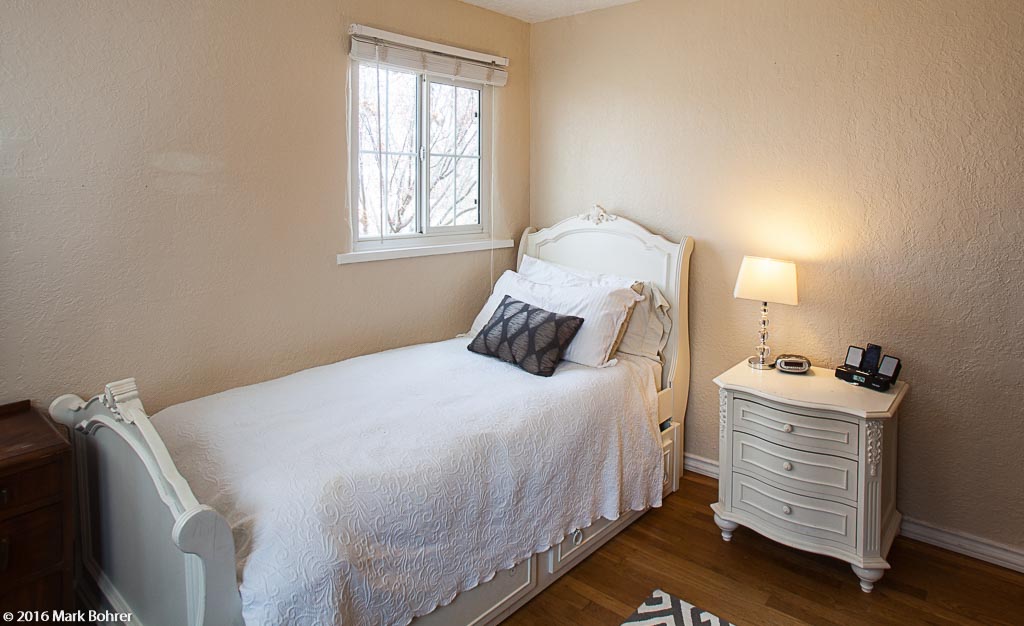 Bedroom with window light and lamp 16-35mm f/2.8L at 16mm on EOS 5D mk II After I finish, I’ll break down everything, check it against my printed gear list to avoid leaving anything behind, and pack it up. Once again, dealing with just two cases makes it easy to reload the SUV. Fanny Pack For A Travellin’ Man Casual travel is different. I usually have a fanny pack with walk-around camera and lenses, and separate cases with full-frame dSLR and 400mm, plus 16-35mm f/2.8L. ThinkTank’s Speed Demon v2 holds three Leica-mount lenses – 25mm, 35mm, and 50mm – plus a Canon FD 100mm-300mm f/5.6L, with mount adapters. I’ll mount the 25mm f/2.8 on a Fuji X-E2 mirrorless camera and stash it in the fanny pack with the lenses. I might also carry a 15mm f/5.6 for wide views – in the same case. Unless I expect to shoot wildlife, I’ll just strap on the fanny pack and go. I’ll leave the shoulder strap off to make it easier to shift around. 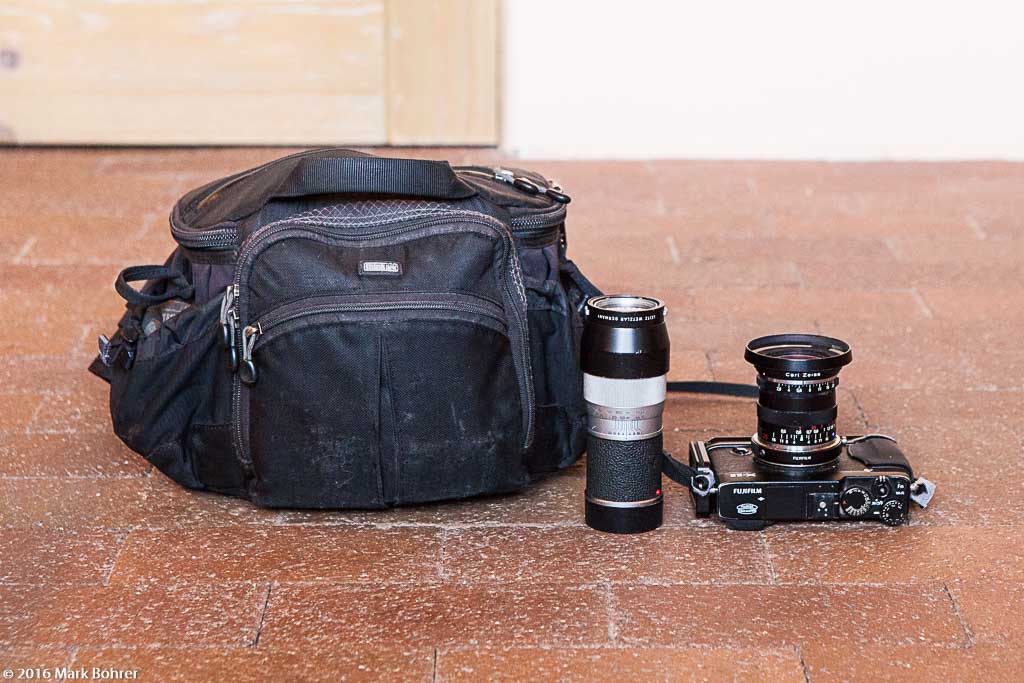 Think Tank Speed Demon v2 with Leitz 135mm f/4 and Zeiss 25mm f/2.8 Biogon T* on Fuji X-E2 – the bulge on top is from the FD 100-300mm f/3.5L inside. If I need a small amount of fill, I’ll flip up the X-E2’s built-in flash to highlight peoples’ faces. That fanny pack saves my back, and it’s lots easier to carry on airplanes. If I’m really travelling light, I’ll substitute a 135mm f/4 Elmar for the FD 100-300mm zoom and leave the dSLR gear behind. Serious Gear For Strange Light Or Serious Shooting If I expect unusual lighting or I’m making a serious submission, I’ll leave the mirrorless gear / fanny pack at home and carry the same gear and cases I use for sports. That’s what I used to carry for ghost towns and other travel shooting. 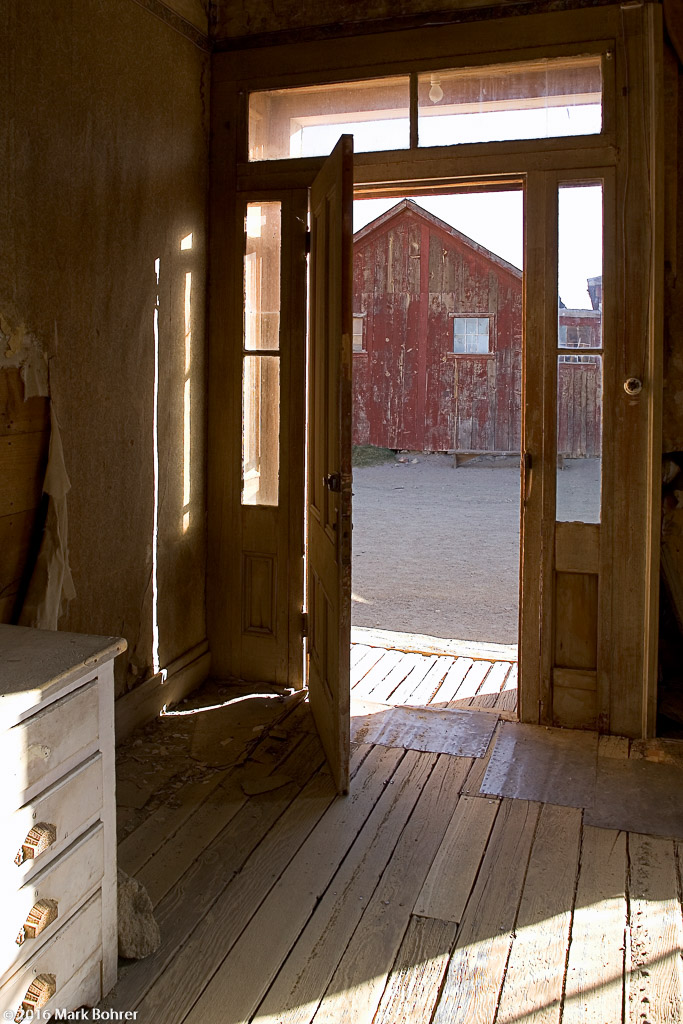 Doorway, Bodie Ghost Town, California Inspired by an Ace Powell painting 24-70mm f/2.8L at 24mm on EOS 1D mk II Flash is a great tool for shooting petroglyphs or smaller ruins like New Mexico’s Gila Cliff Dwellings. I’ll stash a remote-triggered flash in a ruin to make it look lived-in. Then I’ll place a tungsten gel over the flash to make it look more like firelight. I forgot to bring gels at Gila Cliff Dwellings once, so I had to ‘brush’ the light in Lightroom and tint it afterwards. Not quite what I wanted, but it worked well enough. 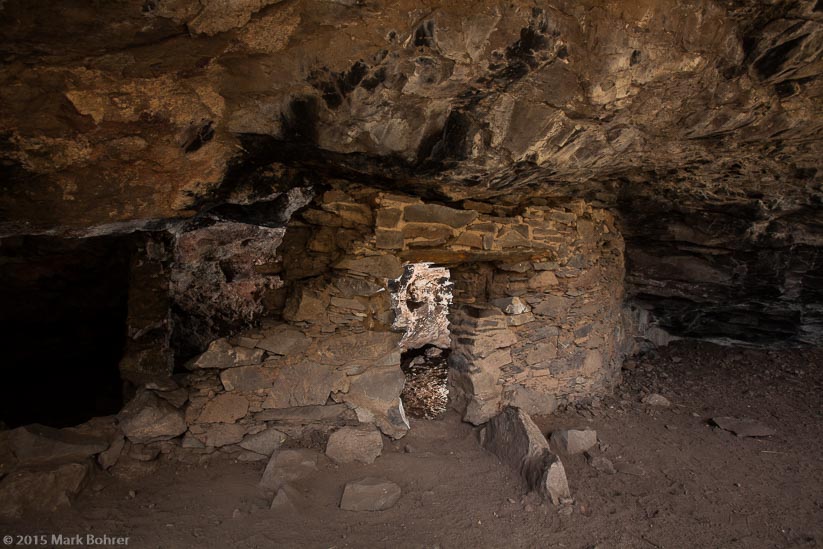 Lower Scorpion ruin, Gila Cliff Dwellings National Monument 16-35mm f/2.8L at 18mm on EOS5D mk II One remotely-triggered 430EX flash inside the ruin Lens Cases And Holster for Ruins I’ll bring the 16-35mm f/2.8L, 24-70mm f/2.8L and 70-200mm f/2.8L for ruins. I use a belted 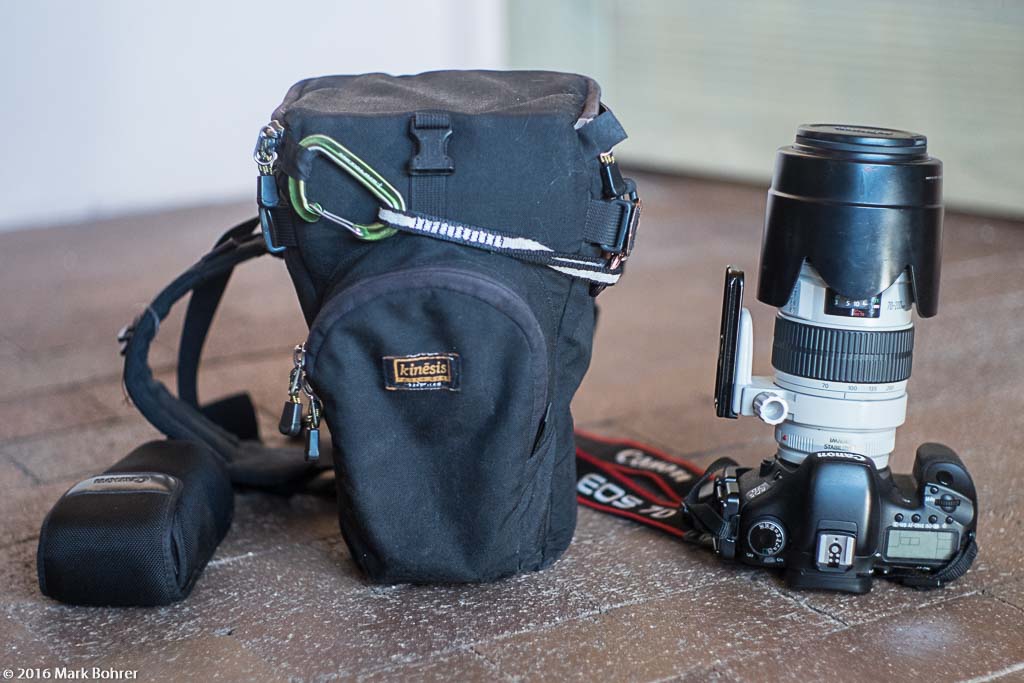 Kinesis Gear C600 holster case, EF 70-200mm f/2.8L IS on EOS 7D. 430EX flash in case at left. Carabiners clip to my belt as drop protection. 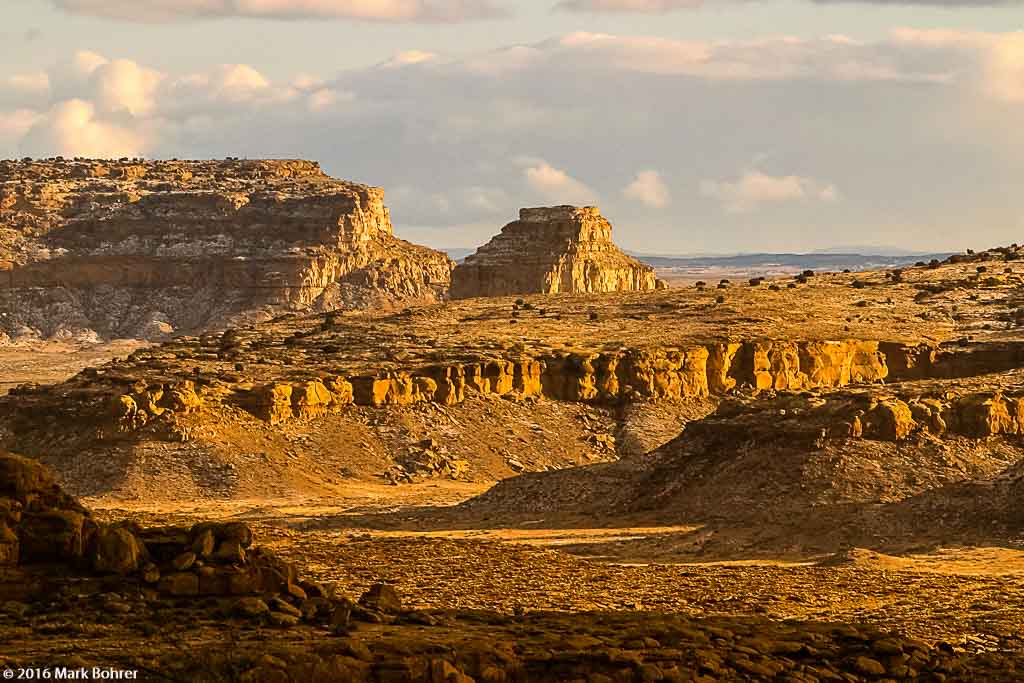 Fajada Butte, Chaco Canyon – 70-200mm f/2.8L IS on EOS 10D Rarely I’ll take along the 24mm f/3.5L TS-E. With ruins, strictly parallel vertical lines aren’t so important, but I still try to avoid excessive line tilts. If you’re backpacking to a remote site, this extensive comparison from Jen Reviews may help you pick your pack. I used to use Osprey packs for their light weight and pockets – they were the right size for a go-pack for SAR and short trips. But renewed problems with spinal stenosis (there are a couple vertebrae that are too close together in my lower back, sending pain out my left leg) have kept me from carrying large loads anywhere but around my waist. 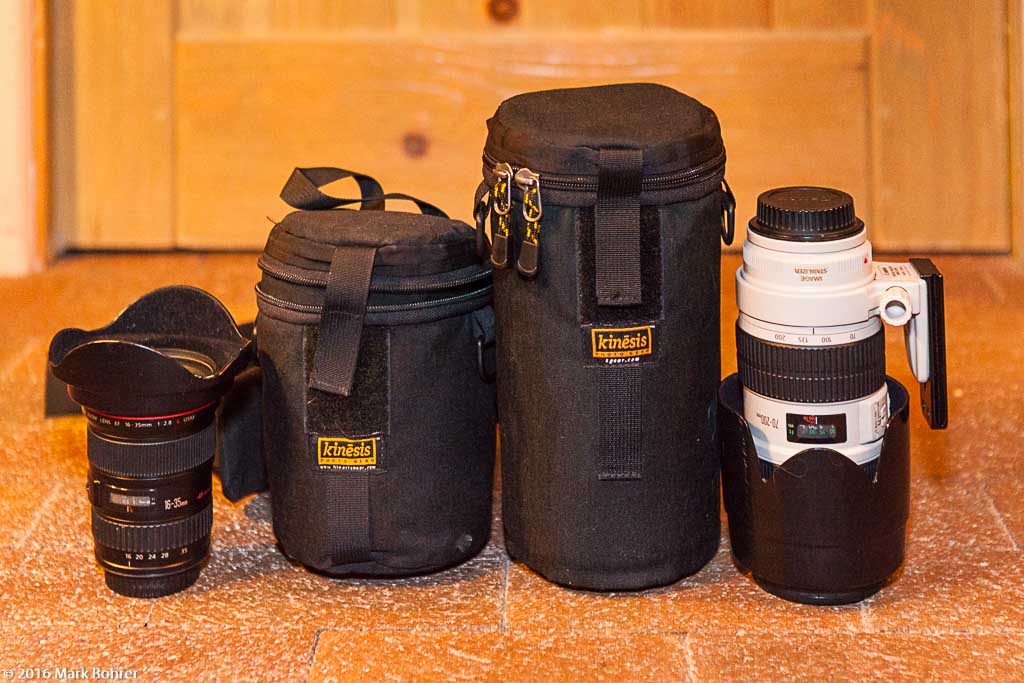 Kinesis Gear E165, E280 lens cases More Cases I Use – Think Tank Airport Security v2 – for large amounts of gear, 500mm-600mm lenses – Hakuba PSTC 200 Tripod Case – for tripods (obviously), lightstands, unbrellas, softboxes – Think Tank Speed Demon v2 – for mirrorless or rangefinder with several small prime lenses – Kinesis Gear E280 Large Lens Pouch – for 70-200mm f/2.8 L IS with hood reversed, or 24-70mm f/2.8L with hood extended – Kinesis Gear E165 Medium Lens Pouch – for 16-35mm f/2.8L, or 24-70mm f/2.8L with hood reversed |
(408) 483-3782
Curious about how to shoot ruins?(408) 483-3782

Recent Comments